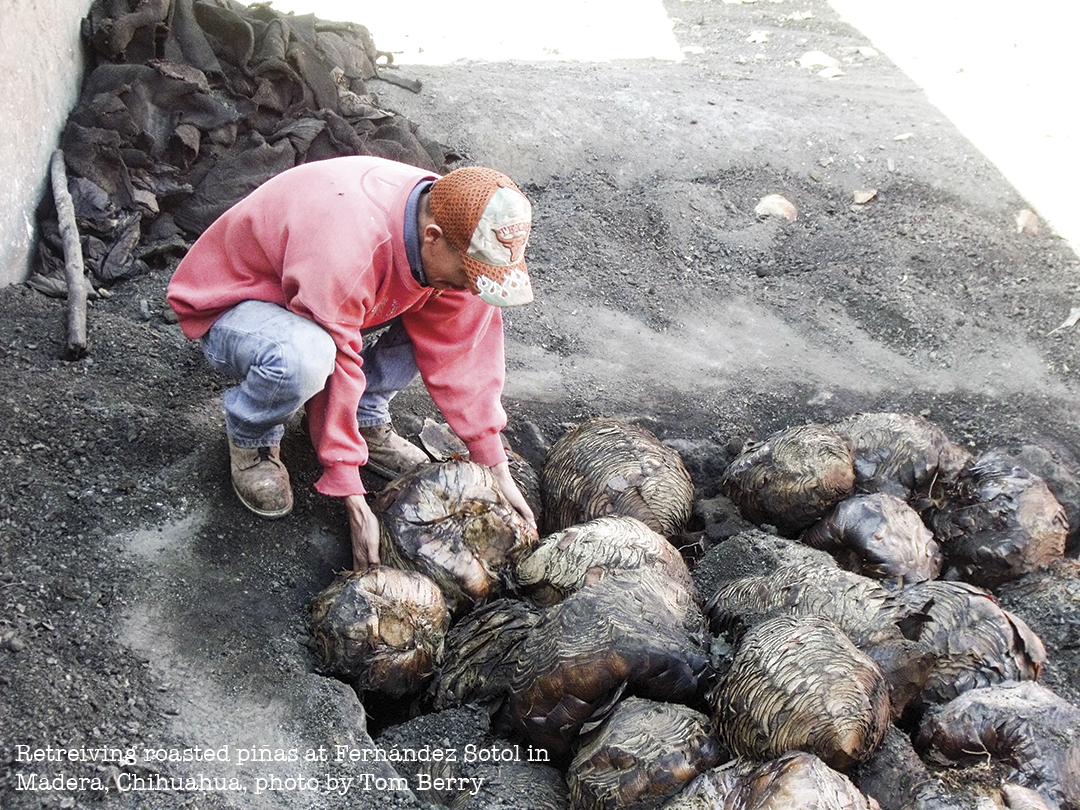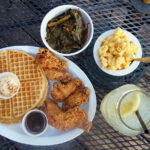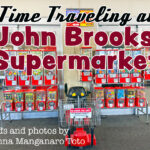#68 | Champagne, Sotol, and Clay
Over New Year’s, we were subject to an informal test of bubbly—”real” Champagne vs. sparkling wine made “à la méthode champenoise,” from grapes grown not within a certain 132 square miles northeast of Paris but from an interstate selection including grapes grown in windy New Mexico. While mulling over the notable distinctions and contemplating how much terroir had to do with them—the intensely dry champagne posing the question to the lighter, fruitier, perhaps more drinkable Gruet—and how much was a matter of style, we were reminded of another debate over nomenclature.
Sotol is a spirit made from sotol, also known as desert spoon, which grows wild in the Chihuahuan Desert (on both sides of the border, although extending farther south of it than north) and also may live as an ornamental in a front yard near you. It is as Mexican as Champagne is French. Well, almost: while the United States (along with other countries) honors France’s appellation d’origine contrôlée for Champagne, and also respects Mexico’s denominación de origen protections of tequila and mezcal, not so with sotol.
Over the past year, one Sandro Canovas has been on a campaign to change that. Canovas, who some New Mexicans may know as an ardent adobero, argues simply that Texas distillers should not be able to label their bottles sotol. Place is particularly relevant to sotol, which is traditionally harvested wild. Like many (all?) of the more interesting varieties of mezcal, sotol plants take more than ten years to mature. Which fact (along with the fact that it’s now 2023) raises another question: What is place without time?

In referencing champagne, people will say things like “you can only call it champagne if it’s from Champagne.” But the stringent French appellation system regulates more than region. Not only does champagne have to be produced in Champagne, from start to finish (including bottling and labeling), but there are rules about pruning, spacing, pressing, aging and other aspects of the process.
That leaves us, dear reader, not with answers but questions: Is there danger in placing too much value in a name—or is the risk in not placing enough? Can protecting a name protect an artisanal, locally rooted process? Or could it be, as some argue, that increasing appreciation for the spirit might aid in preserving the tradition?
They say to drink in moderation (if you choose to drink at all), but what does it mean to drink sustainably?
By the way, if you like this newsletter, please share it!

Entrances & Exits
Word is that a lease has been signed for the restaurant space until recently inhabited by Le Pommier Bistro. (Le Pommier may be gone, but you can still learn a few things about sauce from the affable Chef Alain Jorand, who visited with Candolin Cook for The Bite last year.) The owners of Madame Matisse and Thai on Canyon (and still pretty new part-owners of Arable) are said to be planning something Mediterranean (or Italian, or both), but a while back they were planning a sandwich shop in a different La Tienda location, so no promises.
More certain is that Tumbleroot Pottery Pub of Santa Fe will bring clay goblets and tumblers together with solid cocktails and interesting ales. No opening date announced yet, but the venture involves a marriage between Tumbleroot Brewery & Distillery and Paseo Pottery. In the meantime, if you want to try your hand at shaping the clay, Paseo is hosting pottery throwdowns the first Friday of every month. In Albuquerque, the newly opened Burque Throwdown doesn’t have any events with libations on the horizon, but with a little planning you can put together your own (or just sign up for a class where you can build your own vessels).
Speaking of cool things you can do with your friends, Satnam Singh Bhandal, owner of Cliff’s Liquors and Lone Butte General Store, has joined forces with fellow former India House server Ram Pathak to reopen the Plaza-adjacent eatery. They offer online takeout ordering, too.
Occasions
The Corrales Growers’ Market is open tomorrow, January 8, from 11 am to 1 pm. If you’re looking for something specific, check their Facebook page for an update on vendors before you go.
How the Vessel Is Used runs through January 14 at King Galleries in Santa Fe. The exhibition combining traditionally made pottery and Native cuisine is a collaboration between nutritionist and edible New Mexico contributor Alexandria Bipatnath and her partner, potter Jared Tso.
Distillations
Writing for edible New Mexico before many Americans had ever heard the word sotol, Tom Barry talks with some of the product’s key players and notes early concerns about sustainability: “If sotol gains an increased share of the international liquor market, as tequila and mezcal have, then the production of wild-harvested sotol will need to be sharply limited. According to University of Chihuahua agricultural scientist Jesús Miguel Olivas-García, sotol is threatened by increased sotol harvesting, land development, and intensifying periods of drought.”
Others agree. “They shouldn’t be able to make sotol, because they know nothing about sotol,” sotolero Salvador Derma tells Rob D’Amico for Punch.
“For me, winemaking is practically genetic.” That’s Laurent Gruet, speaking to edible New Mexico in 2018. Gruet now heads sparkling wine production at Vara Winery & Distillery, and a different man with champagne bona fides has taken the helm at Gruet.








